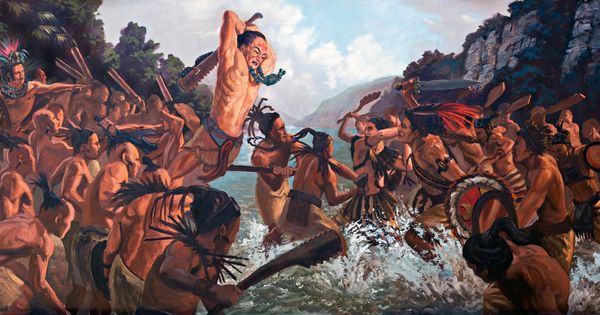Question
Gramps,
What was the breastplate worn by the Levite Priests used for?
Karen
Answer
Dear Karen,
The Lord Himself dictated that the “holy garments” made for Aaron, the first Levitical high priest, were largely ceremonial in purpose “for glory and for beauty” rather than utility (Exodus 28:2).
The breastplate proper, known as the breastplate of judgment, was designed to be integrated with other articles of the sacred vestment. The ephod (a sort of tunic or shirt) had a stone on each shoulder with fasteners. On these stones were engraved the names of the twelve tribes of Israel in order of birth, six on each stone, for a “memorial unto the children of Israel: … [the high priest] shall bear their names before the Lord upon his two shoulders for a memorial” (Ex. 28:9-12). From each fastener came a gold chain that connected to two ends of the breastplate. The breastplate had two more gold chains which bound it to the ephod, and two blue ribbons (or laces) which also bound it to the ephod (Ex. 28:22-28). Both the breastplate and the ephod bore the same four colors: gold, blue, purple, and scarlet (Ex. 28:15). The breastplate had another parallel to the ephod in that it also had attached stones bearing the names of the twelve tribes. In the case of the ephod, however, each tribe was engraven on its own stone in four rows of three. The names are not scripturally indicated, but some later Targums (Jewish commentary and tradition inlined within the scriptures themselves – see, for instance 2 Nephi 27) fill them in with differing orders (Targum Pseudo-Jonathan Section 20). And just as the shoulder stones served as a memorial, so also did these serve the intention that the high priest “bear the names of the children of Israel in the breastplate of judgment upon his heart, when he goeth in unto the holy place, for a memorial before the Lord continually” (Ex. 28:29).
The breastplate was cloth that was twice as long as it was wide (like the Holy Place of the tabernacle), but was folded to a square (like the Most Holy Place, or Holy of Holies of the tabernacle) to form a pocket for the Urim and Thummim. Because of this special function, Josephus calls the breastplate “Essen, which in the Greek language signifies the Oracle“, signifying that this was the place to receive revelation (Antiquities of the Jews 3.7.5). In fact, he describes the breastplate as showing divine favor in battle. “God declared beforehand, by those twelve stones which the high priest bare on his breast, and which were inserted into his breastplate, when they should be victorious in battle; for so great a splendor shone forth from them before the army began to march, that all the people were sensible of God’s being present for their assistance” (Antiquities 3.8.9).
As a symbol, Josephus recognized that the tabernacle was a microcosm of creation, and that the high priest’s holy garments served the same function. “Now the vestment of the high priest being made of linen, signified the earth; the blue denoted the sky, being like lightning in its pomegranates…. And for the ephod, it showed that God had made the universe of four elements; and as for the gold interwoven, I suppose it related to the splendor by which all things are enlightened. He also appointed the breastplate to be placed in the middle of the ephod, to resemble the earth, for that has the very middle place of the world. … Each of the sardonyxes [stones on the shoulders] declares to us the sun and the moon; … And for the twelve stones, whether we understand by them the months, or whether we understand the like number of the signs of that circle which the Greeks call the Zodiac,we shall not be mistaken in their meaning” (Antiquities 3.7.7).
Additionally, the clothes served as a physical reminder of judgment and responsibility. The anointed high priest served in the temple with the twelve tribes weighing on his shoulders and heart. If he served faithfully he would find that he was endowed with power equal to the charge, because his breast was now a receptacle of light and truth through revelation.
Gramps







